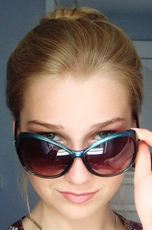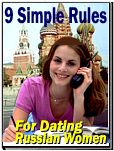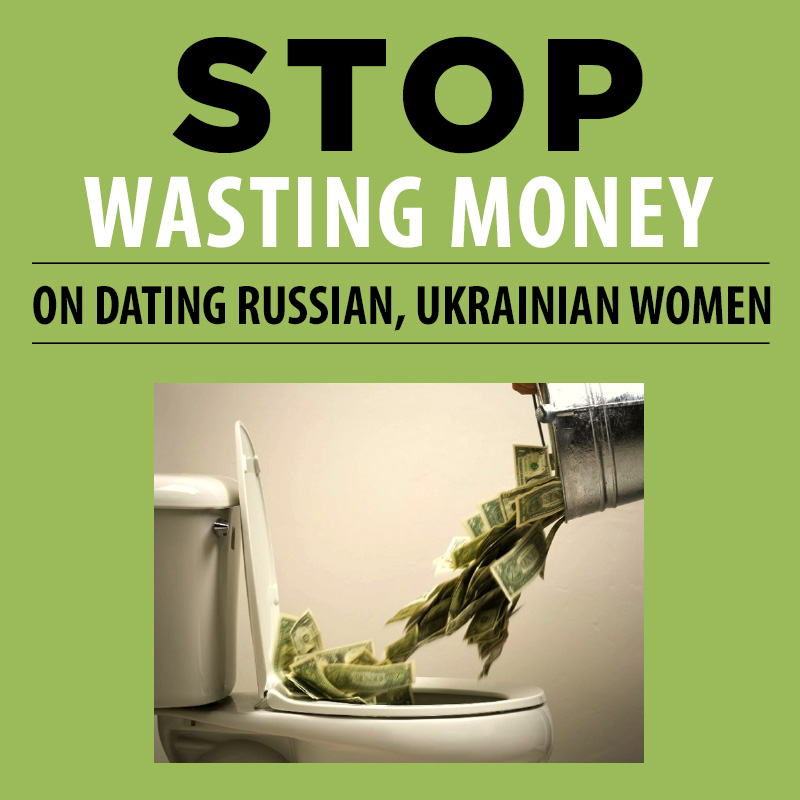Russian
Brides Cyber Guide![]()
| Women join HERE! | |

|
|
|
|
|
|
|
I very much enjoyed your site. It is very interesting and informative. I greatly enjoyed learning more about Russia, feel I have a better view of the world. It is disheartening and yet exciting to learn of the changes that Russia and Russians are going through. The US media has left a lot out!!! I like your frankness and candor. THANK YOU for sharing your insight. Best wishes. J. G., USA |
|
| Meet me today! | |
 Ekaterina, 28 |
|
 Irina, 23 |
|
 Erika, 23 |
|
 Julia, 26 |
|
 Irina, 31 |
|
 Elizaveta, 26 |
|
 Naila, 28 |
|
 Katya, 27 |
|
 Olena, 24 |
|
 Lana, 33 |
|
 Elisabeth, 22 |
|
 Olesya, 34 |
|
 Irina, 30 |
|
 Zhanna, 34 |
|
 Elena, 25 |
|
 Zofiia, 25 |
|
 Sofia, 25 |
|
 Oksana, 23 |
|
 Tatiana, 27 |
|
 Victoria, 37 |
|
 Alisa, 23 |
|
 Viktoria, 28 |
|
 Natalia, 23 |
|
 Tatyana, 22 |
|
 Lisa, 31 |
|
 Angelina, 34 |
|
 Alyona, 35 |
|
 Darya, 25 |
|
 Tanya, 43 |
|
 Dana, 19 |
|
 Oksana, 31 |
|
 Anna, 27 |
|
 Nina, 22 |
|
 Svetlana, 37 |
|
 Irina, 38 |
|
 Raisa , 26 |
|
 Julia, 42 |
|
 Polina, 25 |
|
 Anna, 27 |
|
 Camilla, 18 |
|
 Irina, 50 |
|
 Avrora, 23 |
|
 Kateryna, 25 |
|
 Kseniya, 23 |
|
 Olga, 44 |
|
 Tatiana , 44 |
|
 Polina, 18 |
|
 Anastasiya, 29 |
|
 Olga, 28 |
|
 Oksana, 45 |
|
 Ekaterina, 28 |
|
 Veronika, 26 |
|
 Natasha, 30 |
|
 Olga, 28 |
|
 Victoria, 20 |
|
 Anna, 30 |
|
 Aida, 30 |
|
 Alissa, 21 |
|
 Alexandra, 24 |
|
 Valeria, 22 |
|
 Diana, 19 |
|
 Hurshida, 24 |
|
 Victoria, 23 |
|
 Olga, 20 |
|
 Lili, 30 |
|
 Angelika, 27 |
|
 Shirin, 20 |
|
 Olga, 27 |
|
 Kseniya, 27 |
Russia
Basic information about Russia |
|
Russia is the largest country in the world with the total area 17 075 400 square kilometers (over 6.5 million square miles), that is about 1,8 times the size of the USA. It's situated in the Eastern part of Europe and Northern part of Asia. The main part of the European territory of Russia is situated within the Eastern European Plain (Vostochno-Evropeyskaya Ravnina). The southern border is on the North Caucasus. The main part of the Asian area of Russia is on Zapadno-Sibirskaya Ravnina and Sredne-Sibirskoye Ploskogor'ye. The territory of Russia spans through 11 times zones. Russia borders with Norway, Finland, Estonia, Latvia, Lithuania, Belarus, Poland, Ukraine, Georgia, Azerbaijan, Kazakhstan, Mongolia, China and North Korea by land, and with Sweden, Turkey, Japan and the USA by sea. The climate of Russia varies from the steppes in the south and coastal on the north-west through humid continental in much of European Russia; sub arctic in Siberia to tundra climate in the polar north and monsoon on the Far East. The average temperatures of January vary from 0 to -50°C, July - from 1 to 25°C. Many regions of Siberia and Far East are situated in the permafrost zone. Thus, Russia is one of the coldest countries in the world. The town of Oimyakon in north-east Siberia is the coldest inhabited place on earth, with temperatures recorded at more than 70°C below zero. The inhabited areas are mostly in the continental climate zones with long freezing winters (5-6 months long) and short warm summers. The largest rivers: Volga, Lena, Irtysh, Yenisey, Ob, Amur. The largest lakes: Caspean Sea, Aral'skoye More, Baykal, Ladozhskoye, Onezhskoye. Russia has an extremely wide natural resource base including major deposits of oil, natural gas, coal, strategic minerals, timber, diamonds and gold. There are 85 nature reserves and 25 national parks. Total population is about 144.7 mln people, with about 72.9% urban population. Most of the population are Russians (81,5%), with more than 100 other nationalities (Tatar 3.8%, Ukrainian 3%, Chuvash 1.2%, Bashkir 0.9%). The
official language is Russian. Every autonomous republic uses its own
language as the second official language. Religions: Russian
Orthodox, Muslim, Judaic and others. 1066 cities and towns, 2070
urban settlements (1994). |
|||||||||||||||||||||||||||||||||||||||||||||||||||||||||||||||||||||||||||||||||||||||||||||||||||||||||||||||||||||||||||||||||||||||||||||||||||||||||||||||||||||||||||
|
The official name of the state: Russian Federation. It is a democratic federative republic. The country was formed as independent 24 August 1991 from the Russian Soviet Federative Socialist Republic of Soviet Union. The current Constitution was adopted 12 December 1993 by national referendum. Russia is divided into 21 autonomous republics, 10 autonomous okrugs, 6 krays, 2 federal cities (Moscow and St. Petersburg), 1 autonomous oblast and 49 oblasts. The national capital is Moscow. The chief of the state - President, elected by popular vote for a four-year term. Current president is Vladimir Putin (since March 2000). The legislative branch is bicameral Federal Assembly (Federal'noye Sobranie), which consists of State Duma (Gosudarstvennaya Duma) and the Federation Council (Sovet Federatzii). The executive branch is run by the government. The head of the government is appointed by the president with approval of the State Duma. Russia is potentially one of the wealthiest countries with its natural resources, a well-educated population (99.6% adult literacy; 64% tertiary education enrollment rate), and a diverse industrial base. Nevertheless, its economic situation has deteriorated since the beginning of Perestroika in 1985, which announced moving from centrally planned economy to a market economy. The absence of a clear economical doctrine and means led to destruction of internal economical structure and declining of industries. In its turn, it led to significant raise of unemployment, with official unemployment figures of 10.2% (which might be in reality twice as high, since many people do not file for unemployment benefits). Russian health and education systems, which used to be of the highest standard during the Soviet times, were slowly deteriorating. Inflation, started in 1992, reached its peak in 1994, and increased 10 000% by the end of 1997. In 1998 the government implemented a 1000% denomination of national currency (Rouble), turning back prices from thousands rubles to rubles. August 1998 brought a new serious crisis. The exchange rate of US Dollar flew up from 6 to 24 rubles in less than 6 weeks. Small businesses were almost devastated. Prices for consumer goods increased in 4-5 times with the salaries increased only on 20-30%. However, the crisis gave a boost to the development of national industries, which could not compete with foreign goods with the low dollar rate. Now, 5 years after the crisis, the results become visible with reviving the industrial enterprises, particularly in production of consumer goods and food processing. Currently the average salary is Russia is about US$100 (salary of a teacher, government employee etc). The government experiences permanent difficulties with collection of taxes and fulfilling the national budget. A lot of economic activity is officially unaccounted for and organized crime plays a significant role. National income (GDP): US$310 billion, from which:
The
average annual growth in real GDP in 1991-2001: -3.3% The main industries: complete range of mining and extractive industries producing coal, oil, gas, chemicals, and metals; all forms of machine building from rolling mills to high-performance aircraft and space vehicles; shipbuilding; road and rail transportation equipment; communications equipment; agricultural machinery, tractors, and construction equipment; electric power generating and transmitting equipment; medical and scientific instruments; consumer durables, textiles, foodstuffs, handicrafts. 12 economic regions: Northern, Northern-Eastern, Central, Volgo-Vyatskiy, Central-Chernozemniy, Povolzhskiy, Northern-Caucasus, Ural, Western-Siberian, Eastern-Siberian, Far-Eastern and Kaliningrad region. All statistical figures are quoted as
according to: People Population: 144.7
m The Economy GDP: Rb9,041bn Inflation and finance Consumer price inflation 2002: 15.8% Trade (Principal exports), $bn fob Mineral products: 53.6 Trade (Principal imports), $bn fob Machinery & equipment: 14.1 Health and education Health spending, % of GDP: 6.1 Society Number of households: 51.8m
The largest countries, '000 sq km: 1.
Russia: 17,075 The largest deserts, '000 sq km: 1. Sahara (Nothern
Africa): 8,600 The largest lakes, '000 sq km: 1.
Caspian Sea (Central Asia/Russia): 371 Largest populations (2001), millions: 1. China:
1,285.0 Slowest growing populations (2000-05), average annual growth %: 1. Estonia:
-1.10 Lowest fertility rates, average number of children per woman (2000-05): 1. Hong
Kong: 1.00 Biggest cities, population m (2000): 1. Tokyo
(Japan): 26.4 Most female populations, number of males per 100 females: 1. Estonia:
85 Nationality of asylum applications in industrialized countries, '000 2001: 1.
Afghanistan: 52.8 Biggest economies, GDP $bn: 1. United
States: 10,065.3 Biggest economics by purchasing power, GDP PPP $bn: 1. United
States: 9,792 Lowest economic growth
(1991-2001), 1. Moldova:
-8.5 Biggest traders, % of total world exports: 1. Euro
area: 16.80 Largest surpluses, $m: 1. Japan: 87,800 Largest surpluses as % of GDP, %: 1. Qatar: 26.3 Highest inflation (2001-2002), % consumer price inflation: 1.
Zimbabwe: 134.5 Highest foreign debt, $m: 1. Brazil: 226,362 Largest industrial output, $bn: 1. United
States: 2,227 Lowest growth in industrial
output, 1.
Tajikistan: -10.7 Largest manufacturing output, $bn: 1. United
States: 1,422 Largest services output, $bn: 1. United
States: 6,975 Lowest growth (Agriculture), average annual real % growth (1991-2001): 1. Moldova:
-10.3 Biggest producers (Cereals), '000 tonnes: 1. China: 398,394 Biggest producers (Meat), '000 tonnes: 1. China: 64,482 Wheat, Top 10 producers, '000 tonnes: 1. China: 94,000 Wheat, Top 10 consumers, '000 tonnes: 1. China: 109,600 Coarse grains, Top 5 producers, '000 tonnes: 1. United States:
262,000 Tea, Top 10 consumers, '000 tonnes: 1. India: 673 Cocoa, Top 10 consumers, '000 tonnes: 1. United States:
691 Copper, Top producers, '000 tonnes: 1. Chile: 4,739 Nickel, Top 10 producers, '000 tonnes: 1.
Russia: 267.3 Aluminium, Top 10 producers, '000 tonnes: 1. China: 3,371 Aluminium, Top 10 consumers, '000 tonnes: 1. United States:
5,122 Gold, Top 10 producers, tonnes: 1. South Africa:
393.5 Platinum, Top 3 producers, tonnes: 1. South Africa:
127.5 Palldium, Top 3 consumers, tonnes: 1.
Russia: 135.0 Rubber (natural and synthetic), Top 10 producers, '000 tonnes: 1. Thailand:
2,430 Rubber (natural and syntetic), Top 10 consumers, '000 tonnes: 1. United States:
2,814 Raw wool, Top 10 producers, '000 tonnes: 1. Australia:
607 Raw wool, Top 10 consumers, '000 tonnes: 1. China: 436 Cotton, Top 10 consumers, '000 tonnes: 1. China: 5,500 Oil, Top 15 producers, '000 barrels per day: 1. Saudi Arabia:
8,768 Oil, Top 15 consumers, '000 barrels per day: 1. United States:
19,633 Natural gas, Top 10 producers, billion cubic metres: 1. United States:
555.4 Natural gas, Top 10 consumers, billion cubic metres: 1. United States:
616.2 Coal, Top 10 producers, million tonnes oil equivalent: 1. United States:
590.7 Coal, Top 10 consumers, million tonnes oil equivalent: 1. United
States: 555.7 Highest % of population in labour force, 2001 or latest: 1. China: 56.5 Highest % women in force, 2001 or latest: 1. Belarus:
52.9 Highest rate of unemployment, % of labour force: 1.
Macedonia: 55.5 Global competitiveness, Government: 1. Finland The business environment, 2003-07 score: 1. Netherlands:
8.76 Patents, number of patents granted to residents Total (2000): 1. Japan: 123.978 Highest business operating costs, 100=highest (2001): 1. Japan: 100.0 Highest business software piracy, % of software that is pirated (2001): 1. Vietnam:
94 Largest market capitalisation, $m (end 2001): 1. United
States: 13,810,428 Highest growth in market capitalisation, $ term % increase (1996-2001): 1. Bulgaria:
7,114 Highest growth in value traded, $ terms % increase (1996-2001): 1. Kazakhstan:
15,900 Highest growth in number of listed companies, % increase (1996-2001): 1. Romania:
30,135 Longest road networks, km (2001 or latest): 1. United States:
6,304,193 Most crowed road networks, number of vehicles per km of road network (2001 or latest): 1. Hong Kong:
286.7 Most air travel, million passenger-km per year: 1. United States:
1,106,347 Longest railway networks, '000 km: 1. United
States: 230.2 Most rail passengers, Km per person per year: 1. Switzerland:
1,923 Most rail freight, million tonnes-km per year: 1. United
States: 2,151,866 Largest merchant fleets, number of vessels not less than 100 GRT and built before end of 2002: 1. Japan: 7,458
(registration), 2,912 (ownership) Most tourist arrivals, number of arrivals '000: 1. France: 76,503 Biggest tourist spenders, $m: 1. United States:
58,008 Largest tourist receipts, $m: 1. United States:
68,448 Highest death rates, number of deaths per 1,000 populations (2000-05): 1. Sierra
Leone: 29.3 Largest death by
infection/parasitic disease, 1. South Africa:
92.4 Largest death by Intentional injury, deaths per 100,000 population: 1. Colombia:
65.1 Most hospital beds, beds per 1,000 population: 1. Japan: 17.0 Lowest population per doctor, latest population per doctor: 1. Argentina:
52 Highest cost living, December 2002 (USA = 100): 1. Japan: 139 Smallest households, population per dwelling: 1. Sweden: 2.0 Peace Nobel prize winners, 1901-2002: 1. United States:
17 Economics Nobel prize winners, 1901-2002: 1. United States:
26 Literature Nobel prize winners, 1901-2002: 1. France: 14 Physics Nobel prize winners, 1901-2002: 1. United States:
44 Chemistry Nobel prize winners, 1901-2002: 1. United States:
38 Winter games (Olympic medal winners), 1924-2002: 1. Germany:
872 (gold), 659 (silver), 581 (bronze) Alcoholic drinks, retail sales ($ per head): 1. Ireland:
1,355.5 Smokers, average annual consumption of cigarettes per head per day (2002): 1. Greece: 8.6 Total prison population, latest available year: 1. United
States: 2,021,223 Prisoners per 100,00 population, latest available year: 1. United
States: 707 Astronauts, longest time in space (hours): 1.
Musa Manarov, Russia: 12,984 Defence spending, as % of GDP: 1. Eirtrea: 20.9 Arm forces, '000: 1. China: 2,310
(Regular), 550 (Reserves) Environment quality of life, Lowest cities (New York = 100): 1. Mexico
city, Mexico: 29.5 The history of Russia is a history of wars, migrations of nations, occupations, takeovers and revolutions, just like any other. Here is a guide to the milestone events of Russian history. To receive detailed information on the history of Russia, please follow the links below the table.
Russians Visiting Russia English-Russian phrase-book Russian visas
Comments,
suggestions? We want to hear from you!
Want to learn more? Click here
Russians - Russian culture, traditions, holidays, family and daily life, Russian mafia, copyrights and pirates in Russia, upbringing, laws, customs and superstitions, medical aid, education, business, Perestroika and its influence on the Russian society. Country Profile: Russia - From BBC News The Universal Crib On Finding A Russian Wife - The most compressed, step-by-step guidance on finding, courting and marrying a Russian woman.
|
|||||||||||||||||||||||||||||||||||||||||||||||||||||||||||||||||||||||||||||||||||||||||||||||||||||||||||||||||||||||||||||||||||||||||||||||||||||||||||||||||||||||||||





